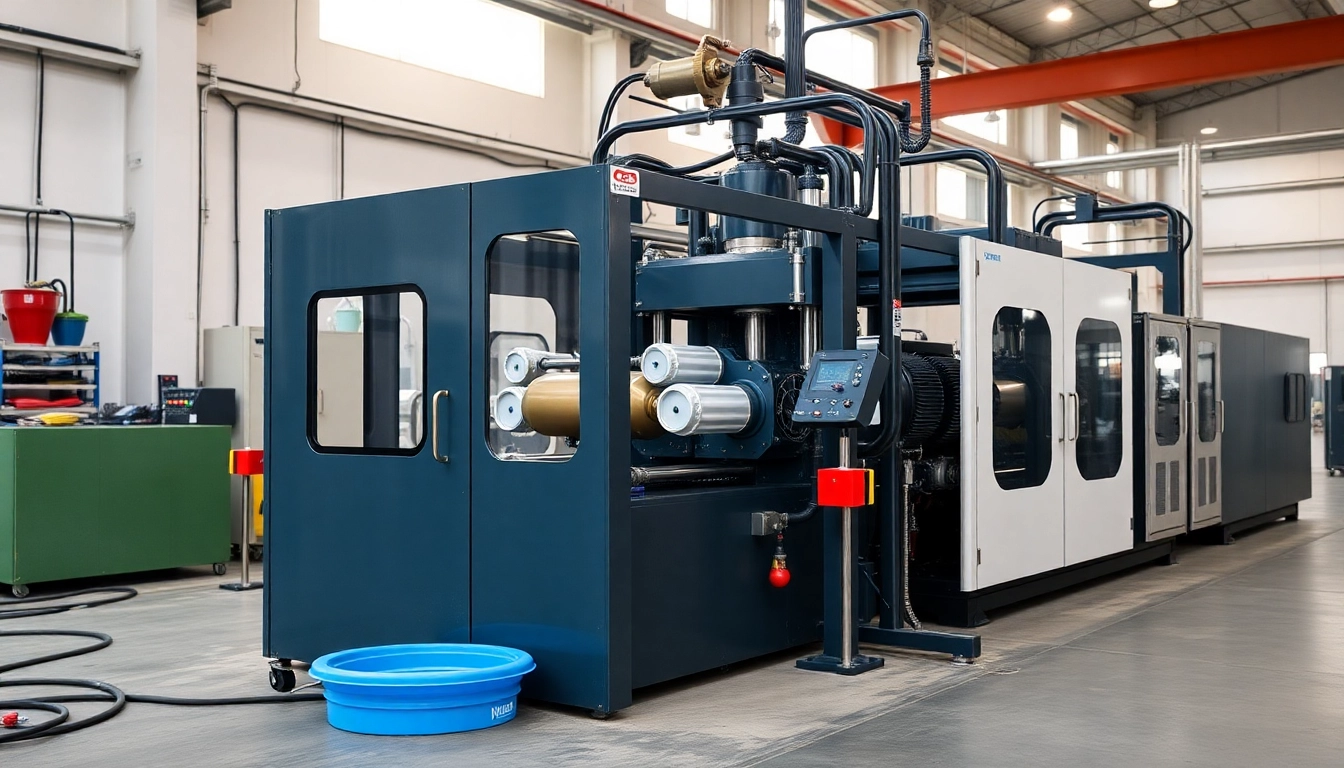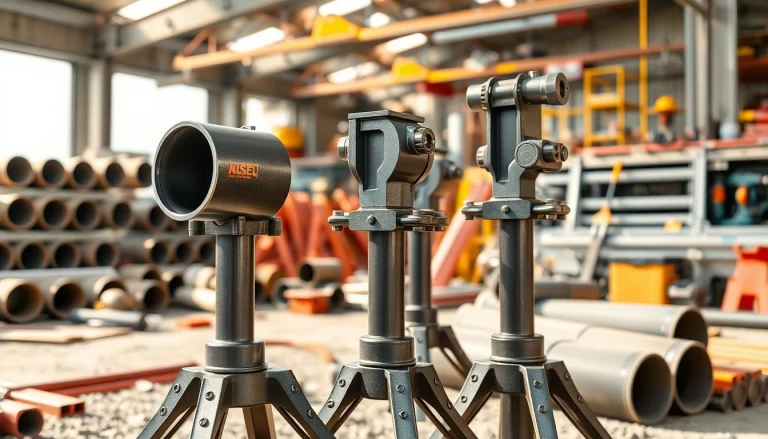Introduction to Blow Molding Technology
Blow molding is an innovative manufacturing process that provides a versatile solution for creating intricate plastic shapes and containers. This technology is widely utilized in various industries, offering significant advantages over traditional manufacturing methods. As a Blow Molding Machine Supplier, understanding the intricacies of blow molding can help manufacturers optimize production efficiency and product quality. In this article, we will explore the fundamentals of blow molding, the different types of machines available, and crucial factors to consider when selecting a supplier.
What is Blow Molding?
Blow molding is a manufacturing process that involves forming plastic into specified shapes by inflating molten material within a mold. This process is analogous to blowing up a balloon, whereby air pressure shapes the material into a desired form. The primary types of blow molding are extrusion blow molding, injection blow molding, and stretch blow molding, each offering distinct manufacturing capabilities tailored to specific applications. Blow molding is primarily utilized for creating containers, automotive parts, and other plastic applications.
The Evolution of Blow Molding Machines
The technology behind blow molding has evolved significantly since its inception in the 1930s. Initially, the process was manual and labor-intensive, requiring skilled technicians to operate small machines. Today, advancements in automation, computer control, and materials science have led to fully automated blow molding machines that are capable of producing thousands of parts per hour with minimal human intervention. Key innovations include systems that enhance precision, reduce cycle times, and allow for greater customization than ever before, making the process more efficient and cost-effective.
Key Benefits of Blow Molding Processes
- Cost-Efficiency: Blow molding is often more economical than alternative manufacturing methods, especially for large production runs.
- Design Flexibility: The process allows for complex shapes and designs, accommodating varied product specifications.
- Material Savings: The ability to use thinner materials without compromising strength leads to significant cost reductions.
- Rapid Production: Automated systems significantly speed up production, enabling businesses to respond quickly to market demands.
Types of Blow Molding Machines
Blow molding machines come in various types, each tailored for specific applications and processes. Understanding these types can help manufacturers select the best machine for their needs.
Extrusion Blow Molding Machines
Extrusion blow molding (EBM) is the most prevalent type of blow molding. In this process, molten plastic is extruded into a tube, which is subsequently inflated within a mold. This method is particularly effective for producing hollow objects such as bottles, containers, and drums, and it is known for its capability to handle a wide range of plastic resins.
Injection Blow Molding Machines
Injection blow molding (IBM) is a two-step process that results in high-precision molded parts. It involves injecting the molten material into a preform, which is then blown into its final shape. This method is ideal for producing small-sized container products with high clarity and dimensional accuracy, making it suitable for pharmaceutical and cosmetic packaging.
Stretch Blow Molding Machines
Stretch blow molding combines the stretching of the preform and blowing to produce containers, generally suitable for PET materials. It enhances strength and resistance to pressure, making it perfect for carbonated beverage bottles. This machine is critical in industries where durability and clarity are paramount.
Choosing the Right Blow Molding Machine Supplier
Selecting the appropriate supplier for blow molding machines is essential to ensuring efficiency, reliability, and quality in manufacturing processes. Below are critical factors to consider when choosing a supplier.
Important Factors to Consider
- Technical Expertise: Suppliers should have a strong background in blow molding technology and a proven track record in machine manufacturing.
- Product Range: Evaluate the variety of machines offered and if they meet specific production needs.
- After-Sales Support: Reliable support for installation, maintenance, and technical assistance is essential for minimizing downtime.
- Customization Capabilities: Suppliers should offer machines that can be tailored to the unique requirements of different production lines.
Evaluating Supplier Credentials and Experience
Before making a decision, it’s vital to assess the credentials and experience of the supplier. Look for certifications, partnerships with established brands, and evidence of product reliability. Experience within specific industrial sectors can also dictate how well the supplier understands your needs and challenges.
Customer Testimonials and Case Studies
Customer testimonials and case studies are invaluable when evaluating a supplier. Analyzing success stories or feedback from various clients can help gauge not only the performance of the machines offered but also the supplier’s efficiency in addressing any issues that may arise post-installation.
Maximizing Efficiency with Advanced Blow Molding
As industries continue adopting blow molding technology, manufacturers must focus on maximizing efficiency through advanced workflows, technology integration, and maintenance practices.
Integrating Technology for Improved Output
The integration of IoT (Internet of Things), machine learning, and automation in blow molding operations can significantly enhance output. Smart machines equipped with sensors can provide real-time data analytics, enabling manufacturers to monitor production trends, optimize workflows, and reduce waste effectively. Predictive maintenance using AI can also prevent unscheduled downtimes by addressing machine issues before they become critical.
Maintaining Your Blow Molding Machines
Machine maintenance is crucial for sustaining operational efficiency. Regular inspections, timely replacement of wear parts, and thorough cleaning protocols help ensure optimal performance. Establishing a preventive maintenance schedule reduces the risk of unexpected failures and extends the lifespan of the machines.
Innovations in Blow Molding Equipment
The development of energy-efficient machines, automated molding systems, and advancements in material sciences continue to drive the innovation of blow molding equipment. These innovations foster sustainability by lowering energy consumption while improving production capacity. Companies must remain vigilant about current trends and evaluate equipment upgrades regularly to leverage these advancements.
Conclusion: The Future of Blow Molding
The industry landscape for blow molding technology is ever-evolving. Companies that adapt to new technologies and innovate will likely capture greater market share and maintain competitiveness.
Trends and Innovations in Blow Molding
Recent trends in blow molding focus on sustainability, with an increasing emphasis on using recycled materials to produce new plastic products. The exploration of bio-based plastics is also gaining traction, encouraging manufacturers to consider environmentally friendly options without sacrificing performance.
Key Takeaways for Manufacturers
- Understanding the different blow molding types is critical for selecting the right approach for production.
- An effective evaluation of suppliers can significantly improve overall production efficiency.
- Investing in maintenance and technology can extend the lifecycle of machines and optimize output.
Final Thoughts on Selecting a Blow Molding Machine Supplier
Ultimately, selecting the right blow molding machine supplier requires careful consideration of technical capabilities, available support, and market reputation. By prioritizing these factors, manufacturers can achieve their production goals while ensuring quality and efficiency in their operations. As the industry continues to innovate, remaining adaptable and informed will be vital for success.








